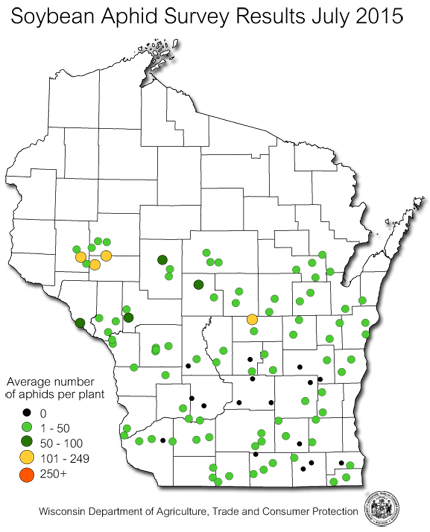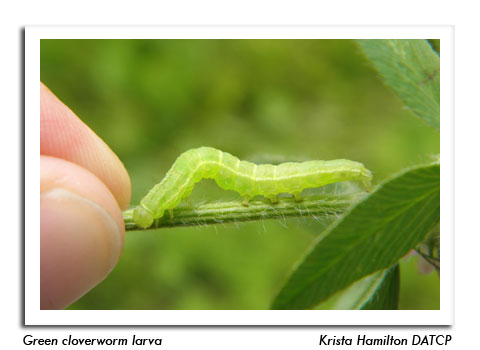
 |
|
|
Soybeans
Volume 60 Number 19 Date 08/27/2015 SOYBEAN APHID - Densities during the second half of the annual survey were the lowest in three years. Examination of 108 soybean fields, once in July and again in August, found a state average of 15 aphids per plant during the July survey and a higher count of 33 per plant in August. For comparison, average densities in 2013 and 2014 were around 55 aphids per plant, while averages from 2010-2012 were extremely low at 7-16 aphids per plant. The state average count of seven aphids per plant in 2012 was the lowest in the 15-year history of soybean aphid surveys in Wisconsin. Only 1% of the sites sampled from August 6-26 contained economic populations of 250-313 aphids per plant, 21% had moderate averages of 50-249 per plant, and 78% had lower counts of less than 49 per plant. Populations in 21% of fields decreased from July to August, suggesting that the aphids were regulated by chemical or natural controls at approximately one-fifth of the sites. Surveys and reports indicate that aphid densities did increase to economic levels in a small percentage of fields this season, though most sites had low or moderate populations and control measures were generally not needed. Results of the survey are illustrated in the map below. GREEN CLOVERWORM - This insect is still very common in soybeans across the southern and western areas of the state. Populations and defoliation are not particularly high, however. Larvae range in size from very small to nearly full grown. -- Krista Hamilton, DATCP Entomologist 




|
|
|